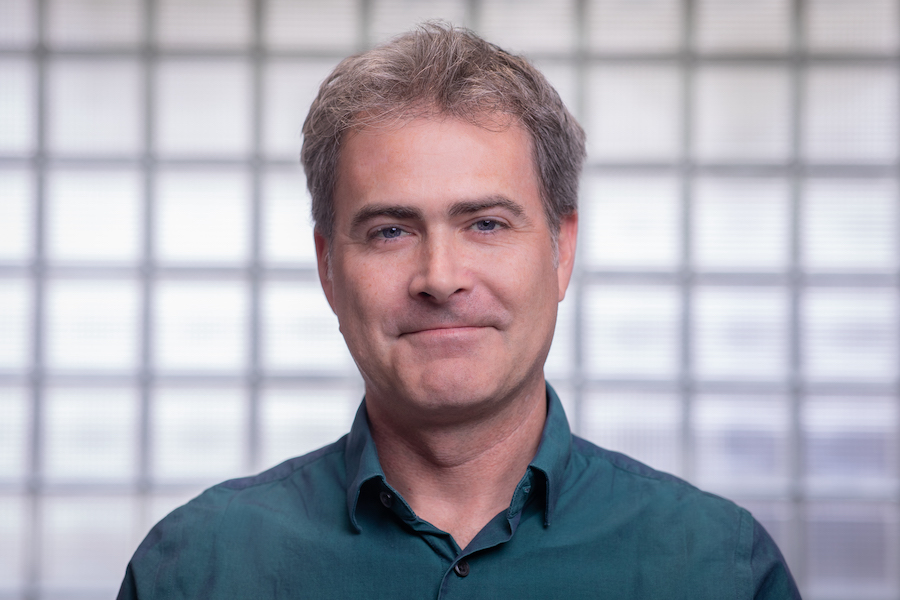Faculty Spotlight: Mark D. McCoy

Mark D. McCoy is an archaeologist, professor of anthropology and chair of Florida State University’s Department of Anthropology, part of the College of Arts and Sciences. McCoy’s research focuses on ancient societies and the relationships between people and their environments in the Pacific Islands, particularly Hawaii, New Zealand and Rapa Nui.
Tell us a little about your background, where you’re from, and what brought you to FSU.
I grew up in Delaware and dreamed about becoming an archaeologist since high school. In 1997, I earned my bachelor’s degree in anthropology from the University of New Mexico in Albuquerque, New Mexico. In 1999, I moved to New Zealand to complete a master’s degree in anthropology at the University of Auckland. That’s where I first encountered the history and culture of the Pacific Islands. After earning my doctorate in anthropology in 2006 at the University of California, Berkeley, I held faculty positions at several universities before coming to FSU. I was drawn to FSU’s Department of Anthropology for its strong emphasis on interdisciplinary research and its scholarly community.
What inspired you to pursue a career in anthropology?
Indiana Jones was a major inspiration for me early on. He’s a nerd who goes on epic adventures and makes archaeology look exciting and, over time, my interest in the field evolved into something deeper. Anthropology offers tools to understand how humans have adapted, failed and thrived throughout history. It’s a way to draw meaningful connections between the past and the present.
Can you break down your areas of research for us?
I study ancient societies with a focus on Pacific Island cultures and how they developed, adapted and responded to their environments. Archaeology doesn’t typically offer interviews or written records, so we reverse-engineer how societies worked by analyzing physical evidence. I’ve also studied economic systems through the long-term history of agriculture and the circulation of stone tools. Part of the fun is piecing together how past societies functioned from the traces they’ve left behind.
Can you tell us more about the geospatial tools used in archaeology?
Geospatial technologies have revolutionized how archaeologists discover and study sites. The first breakthrough in archaeological science came in the 1960s with the “radiocarbon revolution,” which allowed researchers to date events in calendar years for the first time — something previously only possible with written records. Before that, archaeologists could only track relative changes based on soil layers. In 2005, geospatial technologies — GPS, digital mapping, remote sensing and laser scanning — became staples of the archaeological toolkit. These technologies help us detect new sites, document them in incredible detail and share findings more widely.
Can you share an exciting breakthrough in your research that you’re passionate about?
We’re beginning to understand ancient societies on a global scale and not just societies in specific regions. I’m part of an international team of archaeologists who compiled data from past excavations into a massive database of over 55,000 house floorplans from previously excavated sites across several continents spanning the last 12,000 years. By analyzing aspects such as house size, community layout and evidence of fortifications, we created a statistical snapshot of wealth inequality in different societies. I led a study examining 10,000 years of warfare and found that early conflicts didn’t drive inequality, but later ones did drive inequality in more complex and recent societies. Our initial findings were published in May in the Proceedings of the National Academy of Sciences.
What do you want the public to know about the importance of your research?
Archaeology is for everyone. It’s one of the best tools we have for understanding the long-term history of humanity. What we choose to study and decide to preserve affects not just our understanding of the past but also how we imagine our future. These choices affect how history is told and remembered, which makes public engagement essential.
What are some upcoming goals or projects you’re working toward?
One project I’m currently leading explores why the famous moai statues of Rapa Nui, also known as Easter Island, were destroyed. Although these statues stand tall on stone platforms today, all of them had been knocked down many years ago. Our team is investigating several possibilities as to why they were destroyed, including natural causes such as strong earthquakes, deliberate destruction — what historians call iconoclasm — or large-scale neglect. Understanding the story of Rapa Nui matters because it’s often used as a case study to understand how societal collapse might unfold.
How has your work extended beyond your original area of interest?
I’m working with the U.S. Defense POW/MIA Accounting Agency to help locate and recover a servicemember lost in a World War II airplane crash. I began the project in 2023 and will be returning to the crash site this summer with my postdoctoral researcher Sayali Sangamnerkar — a forensic anthropologist and DPAA research partner fellow at FSU — who’s now taking the lead on the excavation. It’s not my typical fieldwork, but it’s a powerful example of how archaeological skills can be applied to achieve an important and meaningful goal.
Are there certain people who have influenced you most in your life and career?
I’ve been fortunate to have been influenced by many individuals throughout my life, and the one trait they all share is a lifelong commitment to curiosity. Staying curious takes effort; it means continuing to ask questions and puzzle things out, even when the answers aren’t obvious. That’s the kind of example I aim to set for my students.
If your students only learned one thing from you (of course, hopefully they learn much more than that), what would you hope it to be?
Empathy. The purpose of social science is to learn about human societies, but it’s also how we learn to create a better society. It’s easy to dehumanize people from the distant past, but by learning about their lives, I hope my students develop empathy and make a positive impact on the world today.

